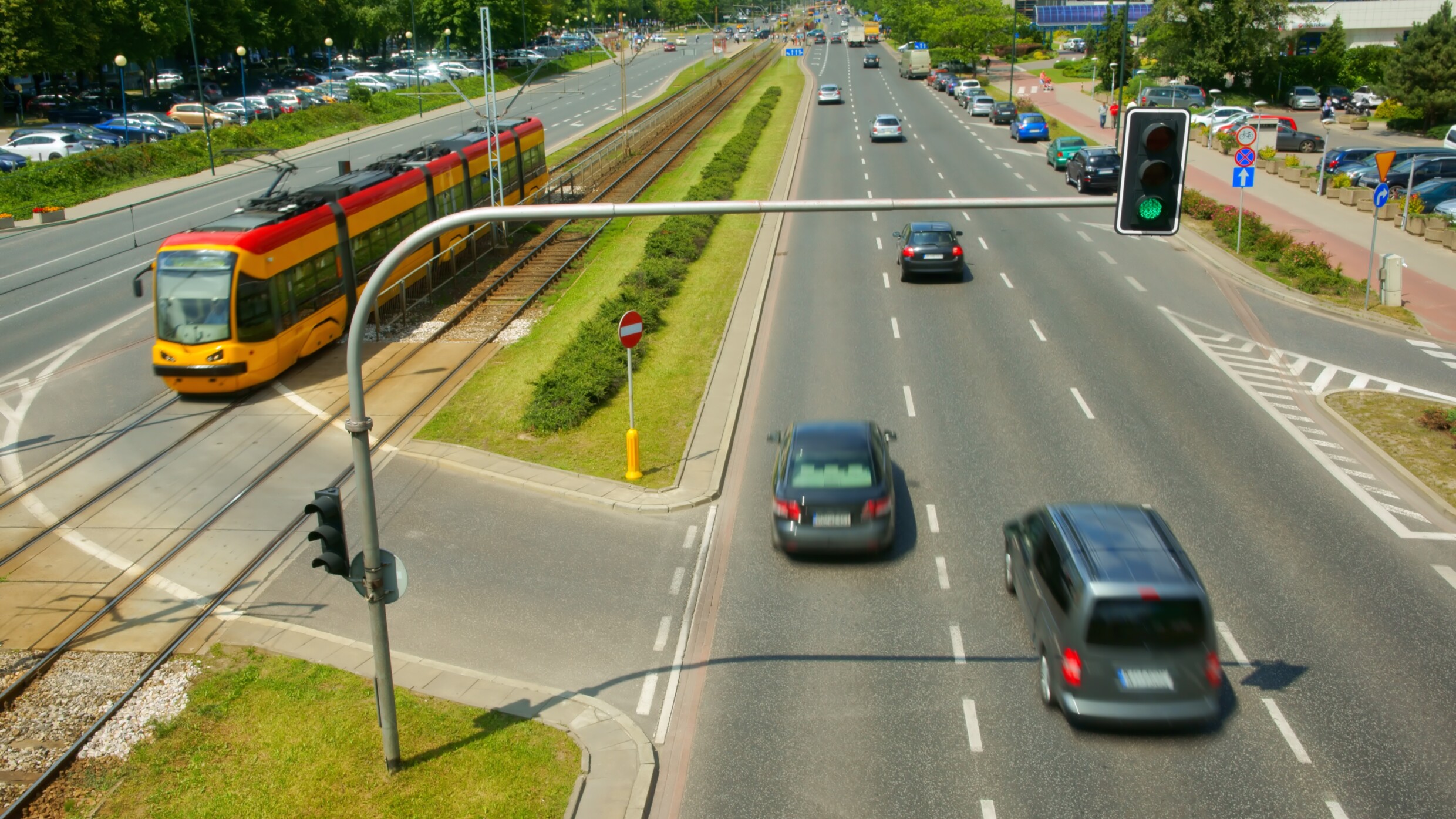Read next
Environmental data
AI helps smart cities get on track
As we move toward the “smart city”, sensors are set to also collect data on air quality, traffic, etc., and — in the long term — provide us with cleaner air and help us get where we want to be faster. The Fraunhofer Institute for Cognitive Systems IKS offers the necessary technologies for the safe operation of artificial intelligence (AI) and provides cities and communities with a framework to help them get started.



© iStock.com/Mirek Kijewski
Sustainability and improving quality of life are the major objectives of the smart city. Intelligent traffic systems also play their part too: They offer the potential to significantly improve the flow of traffic and pollutant emissions within a city — for example by using data that is collected from sensors at various locations and evaluated in real time and that controls traffic lights, lane signals and digital signs as effectively as possible.
Although the smart city with its intelligent traffic flow may still seem far from being a reality for most people, taking a look at the IAA Mobility 2021 international motor show reveals just how much mobility is already changing: Originally a motor show pure and simple, visitors to this year’s exhibition above all got to see technologies relating to the mobility of tomorrow. Combustion engines were almost nowhere to be seen — replaced by an abundance of electric cars, e-bikes, electric scooters and autonomous driving technologies.
Environmental data forms the basis
The basis for intelligent traffic management is formed by environmental data relating to air pollution or congestion, for instance. The relevance of such data is demonstrated in projects such as Digital European Urban Real-time Environmental Data and SMART Section Traffic Control System (DEUS_SmartAir), which is supported by the German Federal Ministry of Transport and Digital Infrastructure (BMVI). The eleven project partners include the Fraunhofer Institute for Transportation and Infrastructure Systems IVI from Dresden. The aim of Europe’s largest research project on environmental data is as follows: Data on air quality in cities is to be evaluated continuously and, based on this, targeted countermeasures to improve air quality are to be taken — such as adapted traffic planning or “smart section traffic control”, as it is known.
The advantages and applications are manifold: If, for example, the air quality on one road is very poor, vehicles can be routed via a different road. Traffic light sequences can be adapted to the traffic, additional lanes can be added as and when needed, and speed limits can be altered to suit the traffic and weather conditions. “Based on a global patent, we are combining modular stationary sensors and mobile sensors — on delivery vehicles, for example — to record environmental pollution in urban areas in real time,” explains Marc Nodorft, Head of the DEUS SmartAir project. Over the long term, an AI-based, real-time forecasting system is to be established that aims to predict the level of pollution within a 24 hour period. After all, AI is a real master when it comes to identifying patterns in data volumes like these.
Artificial intelligence: highly suitable but not error-free
As good as artificial intelligence may be for such applications, it is not absolutely free of errors. “How good the results of machine learning are depends to a large extent on the data used to train these systems,” states Marta Grobelna, a scientist at the Fraunhofer Institute for Cognitive Systems IKS. For example, as many different traffic situations as possible need to be taken into account, and the system also needs to be aware of the different road users. “A vehicle from the gas emergency service must not be confused with an ambulance,” states Grobelna, giving a specific example. What’s more, artificial intelligence is highly complex — it is similar to a black box for which it’s not entirely clear how it reached its result.
“Above all, there is the problem of open context: If I make an automated intervention into the traffic situation, I may indirectly be introducing safety risks,” says Philipp Schleiß, Department Head System Safety Engineering at Fraunhofer IKS. This is because automating certain decisions can result in people perceiving these as irrational — leading to a dilemma situation. If, for example, a traffic light changes unfairly, this may provoke road users to break the rules of the road. It is therefore important to find a good balance between fairness and traffic flow. “The question is: How much decision-making authority can we take away from people by employing artificial intelligence?” asks Schleiß.
Help for cities and communities
With respect to cities and communities who want to take initial (or further) steps toward intelligent traffic systems, the burning questions initially relate to the systems’ practical application. Which sensors should be used — and what is to be achieved by using them? What are the consequences as a result? Would complexity increase, for example? And what negative implications could be associated with this? Fraunhofer IKS conducts research into these topics and provides cities and communities with a methodology to enable them to identify sources of uncertainty in complex intelligent systems and to assess the topic of fairness. “Using the frameworks we have developed, users can approach the topic of intelligent traffic systems in a structured manner — and find a solution that rules out certain negative implications,” explains Schleiß.
This is made possible by the SUDA system architecture analysis which the researchers use to split the system architecture into four steps. The “S” stands for “sense”, i.e., the sensors that may feature inaccuracies. The research team therefore lists the weak points for each sensor independently and looks at the effects that they could have. These may be highly specific for each city. The “U”, short for “understand”, covers artificial intelligence for data interpretation: Black box behavior can mean that something is interpreted incorrectly, particularly in the case of cameras. The “D” stands for the word “decide”: How is the global optimum defined? After all, the individual road user who wants to get home quickly has a different perspective on what they perceive to be “optimum” than the city that wants to reduce nitric oxide pollution, particularly at junctions. The “A” stands for “act”, i.e., for action. This is where the behavior of road users can go off course. How do people behave? Are there various road layouts that result in complete gridlock?
Would you like to learn more about the topic?
Then please do not hesitate to contact us personally.
A further method that researchers from Fraunhofer IKS were involved in developing is the Safer Complex System Framework. “This framework analyzes complex systems and examines how systematic errors can arise in them,” explains Schleiß. “It involves topics from software design as well as questions arising during operation.” Accordingly, Fraunhofer IKS provides cities and communities with perfectly tailored technologies to make intelligent traffic routing and the smart city a reality.



